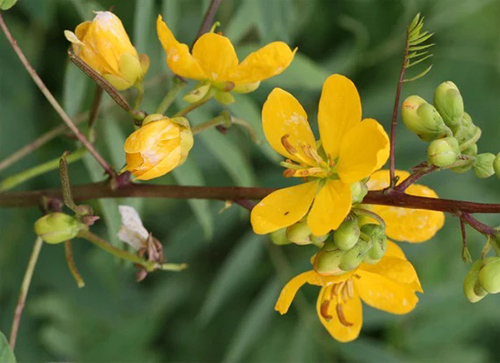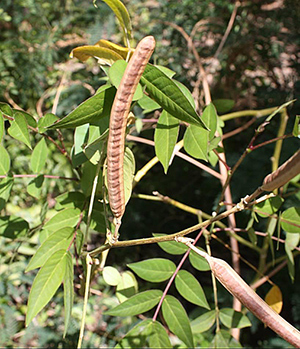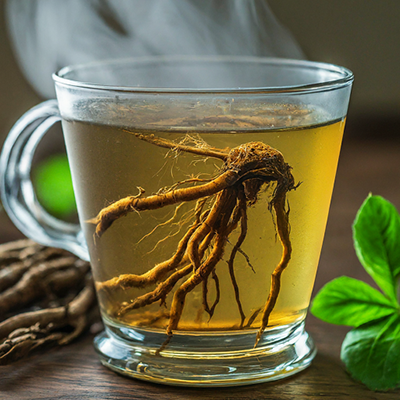Contents
The stinking weed plant has an unpleasant odor but is desirable because of its medicinal virtues. In Colombia, Venezuela, Puerto Rico, and other Latin American countries, its seeds are used to substitute coffee when toasted.

Stinking Weed Scientific Facts
- Scientific name – Cassia occidentalis L.
- Other names – Coffee senna.
- French – Casse fetide.
- Spanish – Brusca.
- Environment – Central and South America: it grows by roadsides in warm climate areas. It is also cultivated in yards and gardens.
- Description—This annual plant of the Leguminosae family grows up to 1 m high. It comprises leaves, with up to 12 pairs of smaller lanceolated leaves each. Its flowers are yellow and beautiful, and its fruit is a large pod up to 12 cm long containing two rows of dark-colored seeds.
- Parts of the plant used medicinally – The leaves, the root, and the seeds.
Healing Properties

The ROOT of stinking weed is used successfully in popular medicine as an antispasmodic substance. Its most specific indication is dysmenorrhea (painful menstruation), usually caused by uterine spasms (womb). Women who suffer from painful menstruation should begin drinking stinking weed tea or infusions some days before the date menstruation is expected to occur.
The SEEDS are infused as a substitute for coffee, and in the regions of Latin America where this plant grows, they are used for prostate disorders.

The leaves have resolutive properties, making inflammation and swelling disappear. They are used as poultices for edema, bruises, furuncles, and sprains.
How to use Stinking Weed
- Decoction of root, ground, with 30 to 50 grams per liter of water. Boil until the liquid reduces to a third. Strain and sweeten with honey. Take two tablespoonfuls with each meal (three times daily).
- Infusion of seeds toasted and ground like coffee or malt (one coffee spoonful per cup of water).
- Poultices of leaves.
DISCLAIMER: All content on this website is presented solely for educational and informational objectives. Do not rely on the information provided as a replacement for advice, diagnosis, or treatment from a qualified medical expert. If you are pregnant, nursing, or have any preexisting medical concerns, talk to your doctor before using any herbal or natural medicines.
REFERENCES
- George D. Pamplona-Roger, M.D. “Encyclopedia of Medicinal Plants.” George D. Pamplona-Roger, M.D. Encyclopedia of Medicinal Plants. Ed. Francesc X. Gelabert. vols. 2 San Fernando de Henares: Editorial Safeliz, 2000. 630. Print.
- Wiley Online Library: https://onlinelibrary.wiley.com
- NCBI Bookshelf: https://www.ncbi.nlm.nih.gov/books/
